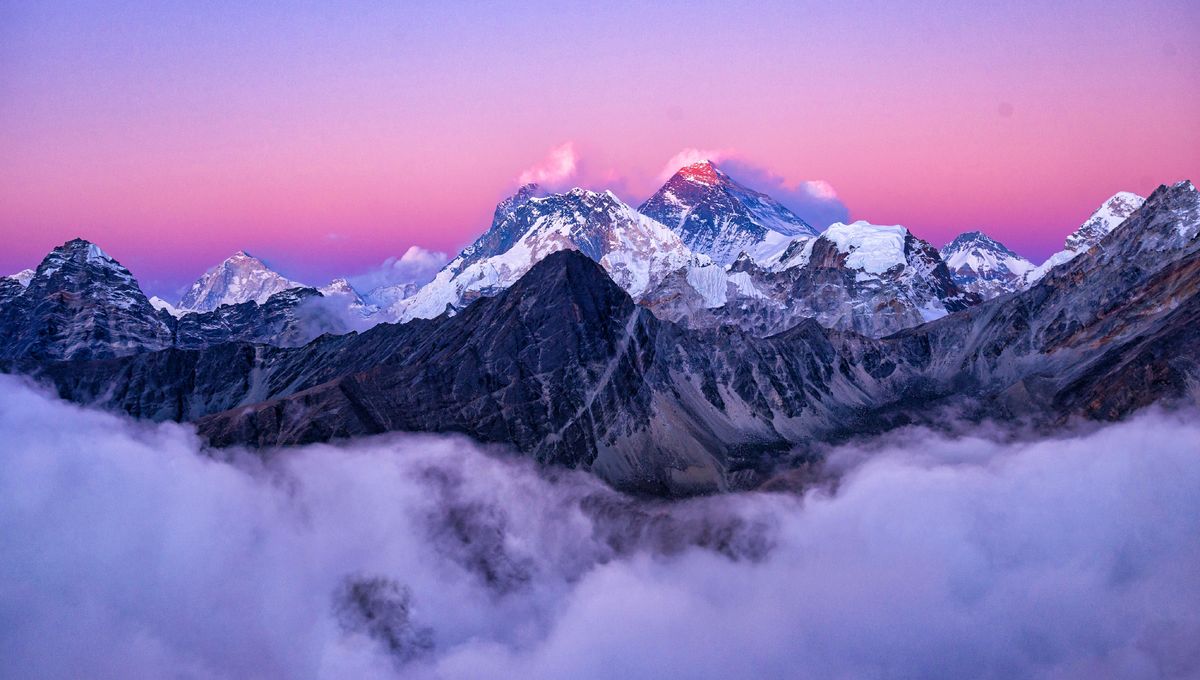
Despite being absolute behemoths, the tallest peaks in the Himalayas are all close together in height – except for one. Mount Everest towers over its esteemed neighbors by hundreds of meters, and new research has finally revealed the cause of the famous peak’s unusual height.
Standing at an incredible 8,849 meters (29,032 feet) high, Everest – also known as Chomolungma in Tibetan or Sagarmāthā in Nepali – is 238 meters (781 feet) taller than K2. According to the authors of the new study, this discrepancy doesn’t really make sense, “given the relative […] uniformity of tectonics in the Himalayas, which provides mountain peak buoyancy with local, small-scale variability, and relatively uniform climatic conditions and erosional processes.”
As a consequence, the next four highest peaks after Everest are separated by a total of just around 120 meters (394 feet). Everest’s extraordinary size therefore appears to be a significant anomaly, which the researchers believe can be explained by a high-altitude river network forcing the summit of Everest skywards by a few millimeters a year.
“Mount Everest is a remarkable mountain of myth and legend and it’s still growing,” said study author Adam Smith in a statement. “Our research shows that as the nearby river system cuts deeper, the loss of material is causing the mountain to spring further upwards.”
The culprit appears to be the Arun river, which passes by the mountain to the east before joining up with the larger Kosi river. Over many millennia, the Arun has cut a deep gorge through the heart of the Himalayas, removing billions of tonnes of rock.
The erosion of such colossal quantities of material has triggered a process called isostatic rebound, whereby the immense pressure of the Earth’s liquid mantle pushing upwards from below the crust gains an advantage against the depleted weight of the ground. This, in turn, appears to be fuelling Everest’s constant growth.
“The interaction between the erosion of the Arun river and the upward pressure of the Earth’s mantle gives Mount Everest a boost, pushing it up higher than it would otherwise be,” explained study author Dr Xu Han.
By calculating the erosion rates of several waterways in the network, the study authors were able to determine that the Arun joined up with the Kosi around 89,000 years ago. This merger caused an increase in the magnitude of isostatic rebound by enabling larger quantities of earth and sediment to be washed away down the Kosi – a phenomenon known as drainage piracy.
As a result, Everest is currently growing by roughly 2 millimeters (0.08 inches) per year, and the researchers calculate that the enormous mountain has gained between 15 and 50 meters (49 to 164 feet) in height since the two rivers met. Other peaks in the region, including Lhotse and Makalu, have also had their summits raised by the same isostatic rebound, elevating them to fourth and fifth position respectively on the list of the world’s highest mountains from sea level.
The study is published in the journal Nature Geoscience.
Source Link: Everest Is A Freak Among The Himalayas, And Now We Know Why